-
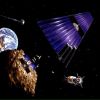 +47 +1
+47 +1Want to be an asteroid miner? There's a database for that
Asteroid mining is slowly but surely coming closer to reality. Many start-ups and governmental agencies alike are getting in on the action. But plenty of tools that would help get this burgeoning industry off the ground are still unavailable. One that would be particularly useful is a list of potential candidate asteroids to visit. While the information has been available in various places, no one has yet combined it into a single, searchable database until now.
-
 +39 +1
+39 +1Queen's Brian May helped NASA return its first asteroid sample
Brian May has once again proven why he is rock royalty. Not only is he the Queen guitarist, but he is also an astrophysicist who recently helped NASA return its first ever asteroid sample to Earth.
-
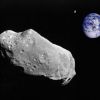 +19 +1
+19 +1Titanic asteroid the size of 84 orcas to pass Earth on Monday
A massive asteroid the size of 84 orcas is set to pass by the Earth on Monday, June 12, according to NASA's asteroid tracker. The asteroid in question has been designated 488453 (1994 XD), according to the Center for Near-Earth Object Studies (CNEOS) at NASA's Jet Propulsion Laboratory (JPL). Despite the initials, it has nothing to do with the XD emoticon some older users of SMS and instant messaging may recognize.
-
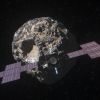 +14 +1
+14 +1Game on—the most metal of asteroid missions is back on the menu
One year after NASA announced an indefinite delay of a much-anticipated mission to visit a metal-rich asteroid, the agency said Monday that the Psyche spacecraft is back on track. The Psyche mission is now scheduled to launch in four months on a Falcon Heavy rocket, and everyone involved in the project feels good about that date.
-
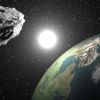 +26 +1
+26 +1New 'quasi-moon' discovered near Earth has been travelling alongside our planet since 100 BC
Astronomers recently identified asteroid 2023 FW13 as a quasi-moon, a space rock orbiting the sun nearly in tandem with Earth.
-
 +3 +1
+3 +1‘City killer’ asteroid to pass harmlessly between Earth and moon
An asteroid big enough to wipe out a city will pass harmlessly between Earth and the moon’s orbit this weekend, missing both, while providing scientists a chance to study the object close up. Asteroid flybys are common but Nasa said it was rare for one so big to come so close and that events like this occurred only about once a decade. Scientists estimate its size to be somewhere between 40 and 90 metres in diameter.
-
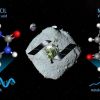 +15 +1
+15 +1RNA compound and vitamin B3 found in samples from near-Earth asteroid
Organic molecules, including uracil and niacin, have been detected in samples collected by Japan's Hayabusa2 mission from the near-Earth asteroid Ryugu. Uracil is a component of RNA while niacin is better known as vitamin B3, a key cofactor for metabolism.
-
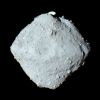 +23 +1
+23 +1A crucial building block of life exists on the asteroid Ryugu
Uracil, a building block of life, has been found on the asteroid Ryugu. Yasuhiro Oba and colleagues discovered the precursor to life in samples collected from the asteroid and returned to Earth by Japan’s Hayabusa2 spacecraft, the team reports March 21 in Nature Communications.
-
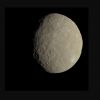 +25 +1
+25 +1Astronomers spy new class of dark, water-rich asteroids like dwarf planet Ceres
Astronomers are slowly shining light on the dark objects hovering in a narrow part of the asteroid belt between Mars and Jupiter. In a new study, researchers found that 10 well-known asteroids have features much like the belt’s largest object, the dwarf planet Ceres, including minerals on their surfaces that formed through reactions with liquid water. They estimate these Ceres-like asteroids formed just 1.5 million to 3.5 million years after our solar system's birth, which makes them important remnants of complex chemical and physical processes that occurred in the early solar nebula.
-
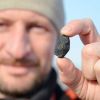 +21 +1
+21 +1Chelyabinsk meteor: Ten years on from 'wake-up call', how safe are we from a potentially catastrophic strike?
A decade on from the Chelyabinsk meteor, and our planet has come a long way in detecting the threat of interstellar objects potentially hurtling into the atmosphere. But has the risk been completely eliminated - and exactly how prepared are we for another dramatic impact?
-
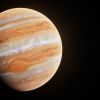 +15 +1
+15 +1Scientists offer a new explanation for a mystery surrounding Jupiter's two massive asteroid swarms
An international team of scientists, including NYU Abu Dhabi researcher Nikolaos Georgakarakos and others from the U.S., Japan, and China, led by Jian Li from Nanjing University, has developed new insights that may explain the numerical asymmetry of the L4 and L5 Jupiter Trojan swarms, two clusters containing more than 10,000 asteroids that move along Jupiter's orbital path around the sun.
-
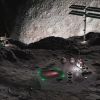 +26 +1
+26 +1Space mining startups see a rich future on asteroids and the moon
A cash flow cascading from the heavens is a provisionary but promising harvest from asteroid mining. It's already a "claim jumping" enterprise with assertions that billions, trillions, even quadrillions of dollars are looming in deep space, ripe for the picking and up for grabs. Several space mining groups, eager to dig into extraterrestrial excavation of asteroids, have already come and gone. Left behind are torn, tattered and beleaguered business plans.
-
 +16 +1
+16 +1Should We Really Be Messing with Asteroid Orbits?
Things go bump in the cosmic night all the time. Rocky objects collide in planetary systems across our galaxy, providing astute astronomers with telltale signatures of warmly glowing dust from these grinding impacts. Stellar remnants like neutron stars can crash together unleashing bursts of searing gamma-rays, and even black holes can collide and coalesce in events marked by the gargantuan ringing of spacetime as energy ripples outward in gravitational waves.
-
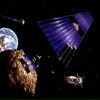 +10 +1
+10 +1Is mining in space socially acceptable?
Traditional mining has been subject to a negative stigma for some time. People, especially in developed countries, have a relatively negative view of this necessary economic activity. Primarily that is due to its environmental impacts—greenhouse gas emissions and habitat destruction are some of the effects that give the industry its negative image.
-
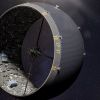 +13 +1
+13 +1Manhattan-sized space habitats possible by creating artificial gravity
Massive asteroids could one day be home to future space colonizers. That's because a team of scientists from the University of Rochester published, what they call, a "wildly theoretical paper" outlining how we could one day use asteroids as massive city-sized space habitats.
-
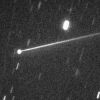 +12 +1
+12 +1A Powerful Recoil Effect Magnified NASA’s Asteroid Deflection Experiment
Scientists continue to pore over the results of NASA’s stunningly successful DART test to deflect a harmless asteroid. As the latest findings suggest, the recoil created by the blast of debris spewing out from Dimorphos after impact was significant, further boosting the spacecraft’s influence on the asteroid.
-
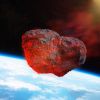 +8 +1
+8 +1An asteroid large enough to destroy life on Earth was found hiding near Venus
The area between Venus and Earth is hard to observe because of the Sun's glare. This newly-observed space rock took astronomers by surprise
-
 +13 +1
+13 +1Scientists Find Potentially Hazardous Asteroid Hiding in the Sun’s Glare
A team of researchers has detected a trio of near-Earth asteroids in the inner solar system, one of which is the largest found since 2014 that poses a potential risk to the planet. The asteroids remained undetected until now because they occupy a region of the sky hidden by the Sun’s glare.
-
 +26 +1
+26 +1Astronomers spot ‘planet killer asteroid’: Is it a threat to Earth?
Three new asteroids have been discovered, one of which astronomers have said could have “a devastating impact on life as we know it” and could potentially lead to a “mass extinction event”. Here’s what we know about ‘2022 AP7’ A team of astronomers has discovered three massive near-Earth asteroids hiding in the glare of the Sun. Of these, one called 2022 AP7 is believed to be the largest planet killer-sized asteroid to be spotted in nearly a decade, and is “potentially hazardous” to Earth.
-
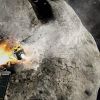 +13 +1
+13 +1Success! NASA's DART Redirects Asteroid in 'Watershed Moment for Humanity'
NASA has succeeded in changing the orbit of asteroid Dimorphos. NASA crashed its Double Asteroid Redirection Test spacecraft, aka DART, into Dimorphos a few weeks ago to test one possible method of protecting Earth from a dangerous body on a collision course with our planet.
Submit a link
Start a discussion




















